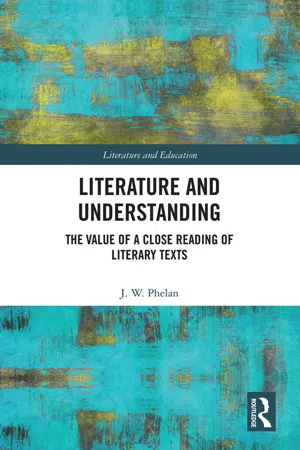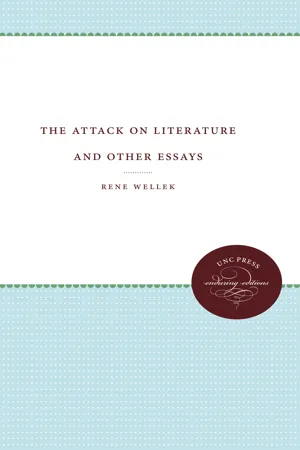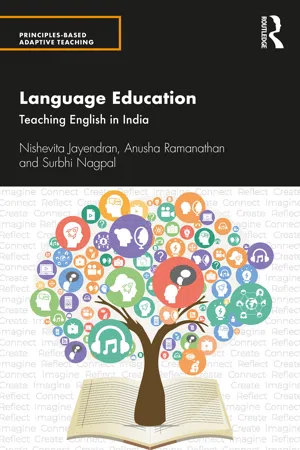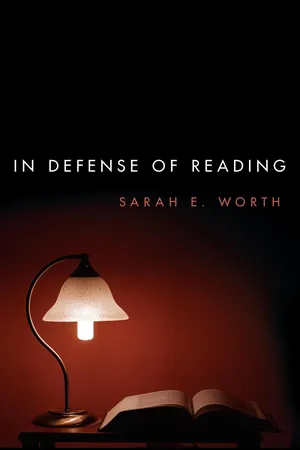Literature
Literary Fiction
Literary fiction refers to a genre of writing that focuses on the quality and depth of the writing, often exploring complex themes and character development. It is known for its emphasis on artistic expression and literary merit, often delving into the human experience and offering thought-provoking insights. This genre is characterized by its nuanced and sophisticated storytelling.
Written by Perlego with AI-assistance
Related key terms
6 Key excerpts on "Literary Fiction"
- eBook - ePub
Literature and Understanding
The Value of a Close Reading of Literary Texts
- Jon Phelan(Author)
- 2020(Publication Date)
- Routledge(Publisher)
Literary Fiction as a subgenre of both literature and fictionThere is a tendency in the philosophy of literature, less conspicuous in the philosophy of fiction, to use the terms ‘literature’ and ‘fiction’ interchangeably. Yet the terms appear to track an important distinction; one recognised by publishers, librarians, booksellers and any reader who expects a different kind of read from the shelf marked ‘literature’ than from the shelf marked ‘fiction’.1 The problem is that in running the concepts ‘literature’ and ‘fiction’ together, no distinction is drawn between arguments that are sound only if the concept ‘literature’ is employed and arguments that are sound only if the concept ‘fiction’ is employed. As a result, the conclusions of such arguments are taken to apply indiscriminately to both literature and fiction, to the potential detriment of both. Some work needs to be done in order to determine what the conceptual relations are between literature, fiction and Literary Fiction. Once this is in place I can investigate the claim that the cognitive gain from reading Literary Fiction is generated from a reader’s engagement with Literary Fiction qua literature and not, as is too often assumed, qua fiction.There is a tradition that takes all literature to be fictional by definition. This view is summarised by Tzvetan Todorov when he says that literature is ‘imitation through language’ and as all imitation is not real but fictional then ‘literature is fiction’ (Todorov 1973: 7 italics in original). It is not clear, however, why we should join this tradition given that many works read and admired as literature are not fictional. Works admired for their literary qualities but which are not fictions include: Descartes’ Meditations, Gibbon’s Decline and Fall of the Roman Empire, some of George Orwell’s essays, and The Song of Solomon. Some works considered ‘literary’ include works based on fact which are fictionalised in their presentation such as Arthur Miller’s The Crucible - eBook - ePub
- Rene Wellek(Author)
- 2018(Publication Date)
- The University of North Carolina Press(Publisher)
There are no doubt borderline cases and within the subgenres distinctions of quality can be made. We can grade detective stories, science fiction, Gothic romances, Westerns, even pornography, and any other current genre by aesthetic, social, and moral criteria. There was and is a constant interchange between high literature and “subliterature.” High literary forms descend to popular forms; for instance, chivalrous romances were transformed into chapbooks, and upperclass literature has often been in need of “rebarbarization.” The impact of folksong and folk ballad at the end of the eighteenth century is an obvious example, but it can also be argued that, for instance, Dostoevsky lifted the French sensational novel into the higher realm of supreme fiction. E. D. Hirsch’s definition of literature as “including any text worthy to be taught to students by teachers of literature” 6 either begs the question in the word “worthy” or seems to endorse the practice of even reputable American universities where Tarzan, The Wizard of Oz, Mickey Spillane’s The Big Kill, and the Story of O. are included in literature courses. We cannot get around the question of quality, which is the central question of criticism. If we define literature as imaginative literature, poems, plays, and novels, we are faced with the problem of how to distinguish it from literature in the wider sense. It has been answered substantially in two ways: literature is fiction or literature uses language in a special way. In Theory of Literature, I have tried to combine the two answers and have been criticized since, especially by Bennison Gray, for embracing two incompatible definitions. “Fictionality” is a new term for the difference between art and life, for a recognition of art as make-believe. Fiction means a denial of a truth of immediate correspondence with reality. Fiction tries to build a world of illusion and does so by distancing, by framing - eBook - ePub
Language Education
Teaching English in India
- Nishevita Jayendran, Anusha Ramanathan, Surbhi Nagpal(Authors)
- 2021(Publication Date)
- Routledge India(Publisher)
Chapter 2 discussed the place of English in postcolonial contexts and teaching languages and literature as one of the ways in which the tensions of adapting the language to express indigenous cultural experiences unfold. Indeed, the debate remains rife between postcolonial writers on ways in which literature in English can be used to articulate personal experiences without necessarily reinforcing colonial attitudes.Accordingly, the sections in this chapter will look at the meaning and value of literature, some contemporary approaches to reading and interpreting literature and the pedagogies that can be adopted to teach the three literary genres of fiction, poetry and drama.Literature: Definition, purpose and value
The conception of literature as a field of study is tied to the purpose and value it holds in life. As Terry Eagleton states, a literary work is, simultaneously, rhetoric and report (Eagleton, 2013, 2016). Descriptions of literature by scholars, writers and critics range from its humanistic value to its aesthetics, appeal to readers, stylisation, poetic quality and political nature. A standard definition of literature is that it is belles lettres, or beautiful letters, if we adopt a literal translation from French. This understanding stresses the aesthetic attributes of literary works. Scholars over the years have, however, added to the definition, variously attributing humanistic and political value to the field. In this section, we will consider select approaches to literature and its place within academia and cultural studies. We will consider Elaine Showalter’s 12 functions that encapsulate the various goals and contexts of teaching the discipline. This overview will help us better situate the teaching and learning of literature in educational contexts, demonstrating its application in interdisciplinary frameworks as it moves beyond the language classroom to promote critical literacy and life skills.Concurrent to this interdisciplinarity is the emerging emphasis on comparative world literature, whereby fiction, prose, poetry and drama from across the world are read in dialogue with each other. World literature, as a field of study, is a dynamic space that examines themes and genres, as well as their representations for a comparative study and critique of perspectives. Through this field, literature becomes an artefact, moulded by the imagination, crafted creatively and engaging actively with the world around us. Literature becomes one among many cultural practices that bear the mark of regions and beliefs. It also brings to the fore the challenges of globalisation and the exchange of ideas and/through languages and cultures. This is particularly true of classical and folk literature, and myths, to take a few examples. Works like the Ramayana, the Mahabharata, the Iliad and the Odyssey - eBook - ePub
- Sarah E. Worth(Author)
- 2017(Publication Date)
- Rowman & Littlefield International(Publisher)
I agree with Friend’s concerns about the reductionist tendency to assess genre and want to continue to avoid this reductionism, as well. The problem is that when the discussion stays at the abstract level of fiction and nonfiction in terms of what we are either intended to imagine or believe, it sells short all of the subgenres of actual literary works. This should also be a larger concern. Fiction and nonfiction are not merely genres of literary works; they are also conceptual categories that apply to the broadest way of approaching the understanding and appreciation of literature. When philosophers talk about what it is for something to be a fiction or what it is to be considered fictional, we take this to be an entirely abstract category with which to make sense of our experiences. When literary critics (or even most everyday readers) hear mention of fiction, they think of a particular category of literature or go so far as to even equate it with novels. So there is a disconnect between fiction as intention and fiction as literary genre.What I want to talk about is fiction as a literary genre, but through a distinctively philosophical framework. I also take it that fiction as intentional stance and fiction as genre both have ways to inform the other. Discussions of fiction and nonfiction certainly have their place in the philosophical literature, but I want to focus more on the discussions that are required to understand the way in which narrative comprehension is possible at all and the way that the work of comprehension is coextensive with making sense of genre. What this means, however, is that the work of the reader must function not only at the abstract level of understanding the genres but also dealing with a number of particular examples and thinking seriously about the way in which comprehension works at the micro level (sentence structure), the macro level (story comprehension), and how various works form the network of relationships that make Friend’s contextualist account of genre make sense.The use and intention theories make up the two primary approaches in the literature. I take issue with two aspects of these, which will help me outline my own position. First, I mentioned briefly the notion of fictional worlds. In the discussion of fictionality, it is dangerous to rely primarily on individual fictional utterances, sentences, or small examples. When small or singular examples are used, which both the use and intention theories do, the literary work is reduced to something that fictional worlds cannot be reduced to. Fictional or true sentences refer only to the truth status, not - Noël Carroll, John Gibson, Noël Carroll, John Gibson(Authors)
- 2015(Publication Date)
- Routledge(Publisher)
question/answer) narrative (ibid.: 194), predictability which is rooted in membership in a recognized genre, specific kinds of content such as “action/adventure scenarios” (ibid.), sympathetic characters who display recognizable psychological traits, and the inclusion of features which are designed to produce standard emotional responses (Harold 2011). Note that none of these features appears to count as a necessary condition for being popular fiction, and they may all also appear in Literary Fiction. What, then, is the logical relationship between the categories of popular fiction and Literary Fiction? Do they overlap or are they mutually exclusive? Are they exhaustive of the category of fiction or are there other categories? It is obvious that a literary work can become popular in the purely numerical sense. It is less obvious whether a literary work which is originally outside the sphere of the popular can become popular fiction in a more substantive sense. On the other hand, it is often said that some works which are originally popular fiction become works of literature over time. For example, Theodore Gracyk suggests that Charles Dickens’ novels “move from popular to fine art status” (2007a: 385). We might make sense of such a view by appealing to functional theories of fine art and literature whereby membership in those categories depends on how a work functions at a particular time (Goodman 1978). An alternative approach proposes that some art works are “bilateral” (Cohen 1999 : 141–142), by which is meant that they appeal to two different audiences (i.e. a high audience and a low one) and, hence, may count as both high and low art. Adapting and extending Cohen’s conception of bilaterality it may be useful to think of multifunctional bilateral works of fiction which are intended to function as both popular and literary works- eBook - ePub
Life Storying in Oral History
Fictional Contamination and Literary Complexity
- Jarmila Mildorf(Author)
- 2023(Publication Date)
- De Gruyter(Publisher)
Lena Rydholm (2014: 26) argues that this difficulty arises because any definition will inevitably be contingent on the time as well as cultural and ideological contexts in which it is developed. One could add institutional or disciplinary contexts to this list since they offer different theoretical frameworks and thus different research questions. Fictionality has implications for, and has consequently been debated in, numerous disciplines, among them: philosophy (Currie 1990 ; Davies 2007 ; Friend 2008, 2014; Goodman 1982 ; Lamarque and Olsen 1994; Reicher 2020 ; Searle 1975 ; Stock 2017), theology (Kutzer 2020 ; Vaihinger 1922 [1911]), some branches of psychology (Boothe 2020), history (Schley 2020 ; White 2010 ; Zhang 2004), political science (Kohns 2020), sociology (Benkel 2020), pictorial art and photography (Schröter 2020), film and media studies (Thon 2020), ethnography and ethnology (Schrover 2020) and legal studies (Lieb 2020 ; Lind 2020). Interestingly, in some disciplines such as psychology, ethnography and sociology, writing fictional texts or otherwise engaging with generic fiction is promoted as an alternative to more mainstream methodologies or treatment (see, for example, Jacobson and Larsen 2014; Longo 2015 ; Oatley 2011 ; Watson 2021, 2022). There is a sense that fiction can expand our life worlds and experiences and offer creative means to express ‘truths’ (see also Bareis 2015 ; Demmerling and Vendrell Ferran 2014; Gregory 1998 ; Nünning 2014). Even though here the question is not so much what fiction is but what it can do for us, such examples are nevertheless interesting because they show once again that storytelling in its manifold forms and expressions matters to people. 1 It is therefore not surprising that generic fiction and the question what constitutes fiction have been studied in disciplines outside of literary studies, e.g., in philosophy and linguistics
Index pages curate the most relevant extracts from our library of academic textbooks. They’ve been created using an in-house natural language model (NLM), each adding context and meaning to key research topics.





